Hi Everyone,

The basic concept of smart cities has been around for many decades. However, it was not until the new millennium that major progress was made. Smart cities are being promoted by both Governments and Big Business. Businesses such as CISCO, IBM, and Ford are investing in smart city technology and applications. Countries such as the UK, USA, Japan, Singapore, India, China, and many of the EU countries are adopting smart city strategies (Verdict). Smart cities are claimed to be able to improve efficiency, connectivity, safety, and sustainability. Cities are even ranked based on a Smart City criteria (Smart City Observatory).
In theory, they may sound good. In this post, I discuss smart cities and the possibilities they offer as well as the possible downsides to them and other possible underlying objectives behind them.
What are Smart Cities?
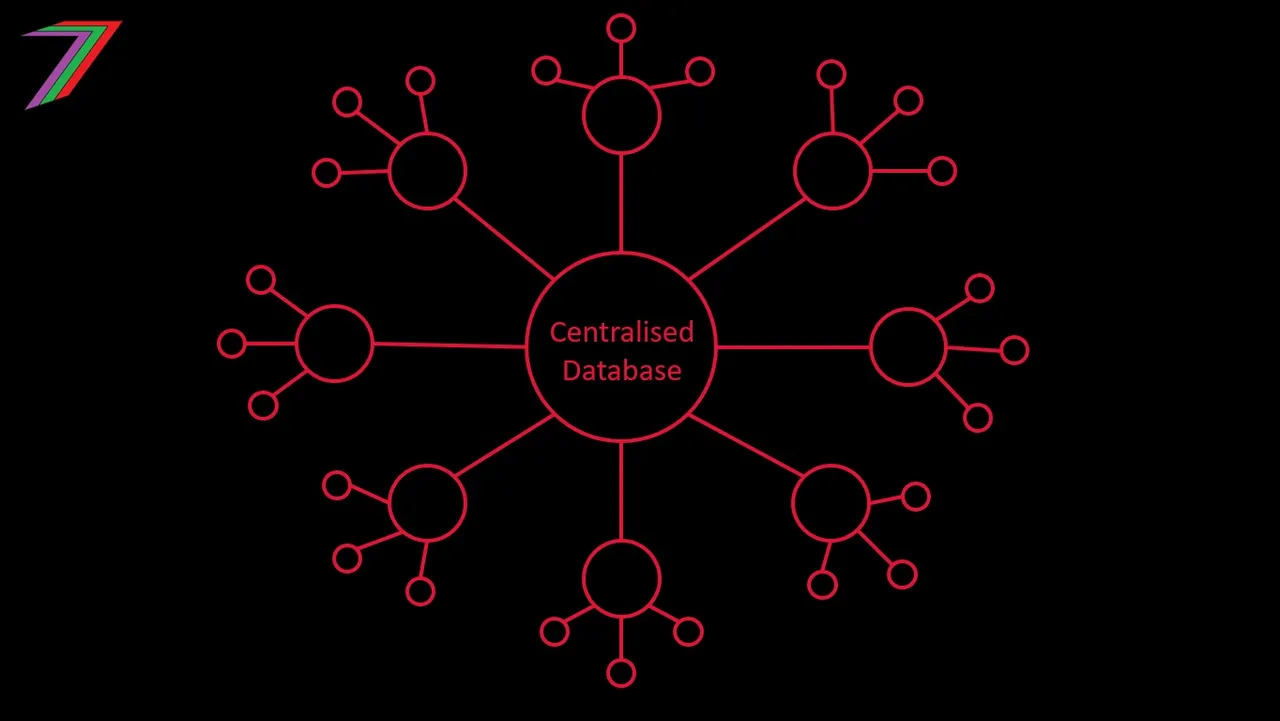
There is no universally agreed definition for smart city. Therefore, it is worth considering several definitions as well as the characteristics that could be used to describe what makes a city ‘smart’. A good place to start would be with the definition provided by CISCO. They are at the technologic forefront in the development of smart city systems that many countries are adopting or attempting to replicate. See definition below:
A smart city uses digital technology to connect, protect, and enhance the lives of citizens. Internet of Things (IoT) sensors, video cameras, social media, and other inputs act as a nervous system, providing the city operator and citizens with constant feedback so they can make informed decisions (CISCO).
For further clarity, Internet of Things (IoT) can be defined as follows.
Internet of Things (IoT) provides networking capability that allows information to be sent to and received from objects and devices (such as fixtures and kitchen appliances) using the Internet (Merriam-Webster Dictionary).
Digi International is another company that is researching and developing technology that can be applied to smart cities. They offered the following definition for smart cities.
Smart Cities are municipalities and urban areas that are deploying connected technologies and IoT solutions to improve everything from critical infrastructure and public safety, to efficiencies in city lighting and energy usage, to better traffic flow and mobility – all of which stand to make cities better places to live, work and play while lowering their carbon footprint (Digi).
It might also be useful to consider a definition from a Government agency. Below is the definition used the European Commission.
A smart city is a place where traditional networks and services are made more efficient with the use of digital solutions for the benefit of its inhabitants and business.
A smart city goes beyond the use of digital technologies for better resource use and less emissions. It means smarter urban transport networks, upgraded water supply and waste disposal facilities and more efficient ways to light and heat buildings. It also means a more interactive and responsive city administration, safer public spaces and meeting the needs of an ageing population (European Comission).
Smart cities might be more easily described based on their desired characteristics or traits. These characteristics typically relate to efficiency in regards to energy, transport, infrastructure and data. They also include connectivity in regards to information and data between various systems (Tech News).
According to Stephen Goldsmith (former Deputy Mayor of New York City) in his article in Datasmart (A Harvard University Publication), a city should be considered smart based on how well it meets the following ten traits.
- Uses data to deliver city services based on where and when they can do the most good.
- Creates digital platforms that allow it to use IoT data to improve the way it builds, maintains and uses physical infrastructure.
- Makes public employees smarter in their work.
- Enhances the way it listens to and involves the public.
- Uses digital tools to operate more equitably.
- Addresses sustainability and resiliency.
- Protects privacy, security and transparency.
- Acts in real time.
- Focuses on its residents.
- Adopts a new culture and organization.
Example of smart cities and projects

There are many possible smart city areas and smart city projects around the world. In this section, I list a few of these from various countries. In general, I discussion some of the initiatives as well as some of the common themes.
United Kingdom

The UK has several smart city projects across the union. APM focuses on 5 of such projects. These projects are:
- Manchester’s Triangulum project (e.g. renewable energy systems)
- Hull’s Smart City OS (e.g. technology to monitor movement of people)
- Smarter London Together (e.g. connectivity between boroughs, widespread data collection and sharing)
- Bristol Is Open (e.g. enhance digital infrastructure)
- Future City Glasgow (e.g. travel apps and intelligent street lighting)
These projects are mostly on a small scale. They are corridors, sections of larger cities, or in smaller cities such as Hull. They are trialling initiatives such as digital travel applications, data collection hubs, information systems, ‘smart’ street lighting, and several others. Smarter London Together initiative appears the most ambitious as it aims to connect all 33 boroughs. It also has support from several large businesses such as Accenture. There appears to be a theme of centralising information and data; this could be energy usage, transport routes, emissions, etc.... Information is then disseminated through technology back to people. This is then used to guide systems and people as a way of improving efficiency.
United States of America

The website Digi ranked the US’s top 12 smartest cities based on smart city initiatives.
- New York, New York (e.g. tourism, navigation, and mobility, water, waste, and traffic management)
- San Jose, California (e.g. public safety, ‘inclusiveness’, sustainability, and usability)
- Boulder, Colorado (e.g. high performance buildings, clean energy, and clean mobility)
- Pittsburgh, Pennsylvania (e.g. traffic system)
- Boston, Massachusetts (e.g. traffic data collection)
- Washington DC, District of Colombia (e.g. traffic data collection)
- San Francisco, California (e.g. energy usage and efficiency and autonomous driving)
- Charlotte, North Carolina (e.g. traffic monitoring)
- Seattle, Washington (e.g. predictive parking, emergency warning system, homeless data)
- Austin, Texas (e.g. digital energy meter system, renewable energy for electric cars)
- Chicago, Illinois (e.g. dimming street lights, water censoring to prevent flooding)
- Dallas, Texas (e.g. water monitoring)
Most of these cities are focused on monitoring traffic and/or energy consumption. It appears these projects are applied on a larger scale than the projects in the UK. This could be because the concept of smart city is being discussed in the context of whole cities rather than individual projects. As with the UK smart city projects, data is collected, centralised, and information based on this data is disseminated in an attempt to improve efficiency. Based on reports, it appears these smart city projects are having some success in improving efficiency in the areas they are targeting. It is also worth noting that favourable reports are made by companies and bodies that stand to benefit from further investment in smart city projects.
The USA hold an annual Smart City Expo. The expo last a couple of days. The expo has many exhibits displaying initiatives and technology applicable to smart cities from businesses and universities. The expo is sponsored by over a dozen private sector sponsors. There are speakers from Government agencies as well as the private sector.
European Union

The European Union has many different smart city related projects, initiatives, polices, and plans. Some of these projects and initiatives are as follows:
- Bridge (e.g. Energy and digitalisation)
- Build-up (e.g. renewable energy and zero carbon proposals)
- CIVITAS (e.g. transport and mobility across European cities)
- Clean energy for EU islands (e.g. renewable energy initative)
- Covenant of Mayors for Climate and Energy (e.g. energy saving measures)
- EIT Urban Mobility (e.g. land usage (reduce road space), transportation, vehicle emission projects)
- Eltis (e.g. exchange of information, knowledge, and experience in sustainable urban mobility)
- Energy cities (It is an association of local authorities from more than 1,000 towns from 30 countries with a focus on sustainable energy)
- European Capital of Innovation (iCapital) Award (They are awards given to cities that have been judged to have used technology to better the lives of their citizens)
- Many other initiatives, policies, and reward schemes
In 2022, the European Capital of Innovation (iCapital) Award (see last dot-point in list above), gave awards to six cities; three awards for capital innovation and three for rising innovation. These cities are as follows:
Capital Innovation
- Aix-Marseille-Provence Métropole (France) (e.g. sustainability and innovative diversity)
- Espoo (Finland) (e.g. small business collaboration to achieve innovation)
- València (Spain) (e.g. climate neutral innovation, and higher education centre)
Rising Innovation
- Haarlem (Netherlands) (e.g. building homes in green environments, and dedication to EU green deal)
- Mainz (Germany) (e.g. development of Covid-19 jab (Comirnaty), production of green hydrogen, and public-private partnerships)
- Aveiro (Portugal) (e.g. adoption of 5G and IoT infrastructure, and integrated STEAM learning/education system)
The Smart City Expo World Congress was held in Barcelona, Spain and will be held there again in 2023. These are huge events that stretch over about three days. The 2022 Expo had over 20,000 in-person attendees and another almost 30,000 online attendees. It had over 800 exhibitors and over 400 speakers, and involved 134 countries from around the world (Smart City Expo). It was supported by dozens of partners and sponsors that included some of the world’s largest companies such as Microsoft, Huawei, and Amazon and global organisations such as the World Economic Forum and World Bank (Smart City Expo). The magnitude of these events demonstrate the support smart city initiatives have from both Governments, international bodies, as well as the private sector (big business in particular).
The European Union (EU) appears to be taking a very broad top-down approach to smart city projects and initiatives for all countries in the union/bloc. They develop policies regarding what they consider smart city objectives that they desire cities and countries to achieve. Cities and countries that achieve these objectives to the EU’s desired standards are rewarded. Many of the EU’s top level policies are focused on energy usage and emissions. This can been seen from the awards they have given out to cities that have focused on climate and sustainability objectives.
Public-Private Partnerships are a key feature of policies and their application to projects. This can be seen from the development of policies as well as several joint projects that have featured in the cities that have been awarded. Many of the policies, to be realised as realistic plans and eventually projects, will require substantial partnerships between Governments and the private sector. If the private sector needs to rely on market forces, most projects relating to renewable energy and zero carbon, in particular, will not be profitable. This will not matter, if Governments are going to pursue a stakeholder capitalism approach to these types of projects and smart city projects in general.
China

China is striving to lead the world in the application of smart city technology. By the end of 2019, more than 500 Chinese cities had submitted proposals to become ‘smart’. The Chinese Government selected 90 of them as pilot projects (CKGSB Knowledge). China have commenced approximately half of all smart city projects in Asia (U.S. News).
China is doing more than just attempting to convert existing cities into smart cities, they are building smart cities from scratch. The Xiong’An new urban area is an example of such a city. The urban area includes residential, educational, commercial, medical, public transportation, cultural and sports facilities. It has what is being called a ‘sponge city landscaping’ strategy. According to Chapman Taylor (planner for the city), the sponge concept involves replenishing underground water supplies with spare water from other areas. The strategy also involves more efficient distribution and usage of water.
Xiong’An Arial View
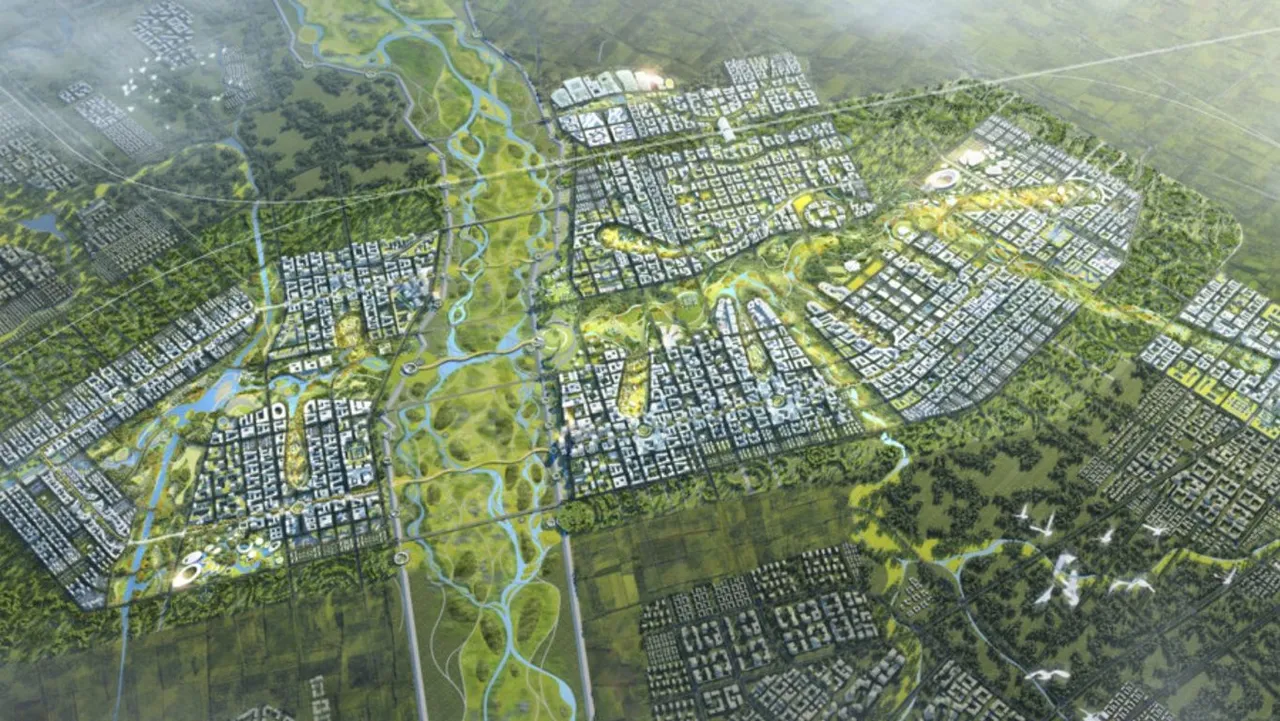
Source: Chapman Taylor
Xiong’An is being developed by the Chinese Government; Tsinghua University and Zhongguancun Science Park; and some of China’s largest companies such as J.D. Digits, Alibaba Group Holding, Tencent Holdings, and Baidu. The projects they are working on include the use of sensors, 5G networks and facilities for supercomputing and big data, artificial intelligence, blockchain, and digital currencies (South China Morning Post). Xiong’An is likely to become the model that other smart cities, both new and converted, will aim to replicate.
China’s approach to smart cities is heavily focused on technology as a means to monitor all activity. This has the potential to improve efficiency but it also means that people will lose most forms of privacy. If this technology could easily be used to monitor activity, it could also be easily used to control activity. Like the EU, China appears to be adopting Public-Private Partnerships to build and upgrade cities to be smart. Unlike the EU, China’s approach to smart cities appears less carbon focused. Therefore, stakeholder capitalism is less likely to be needed to incentivise private companies to participate; market forces may have a more relevant role.
Smart City Ranking and Ranking Criteria
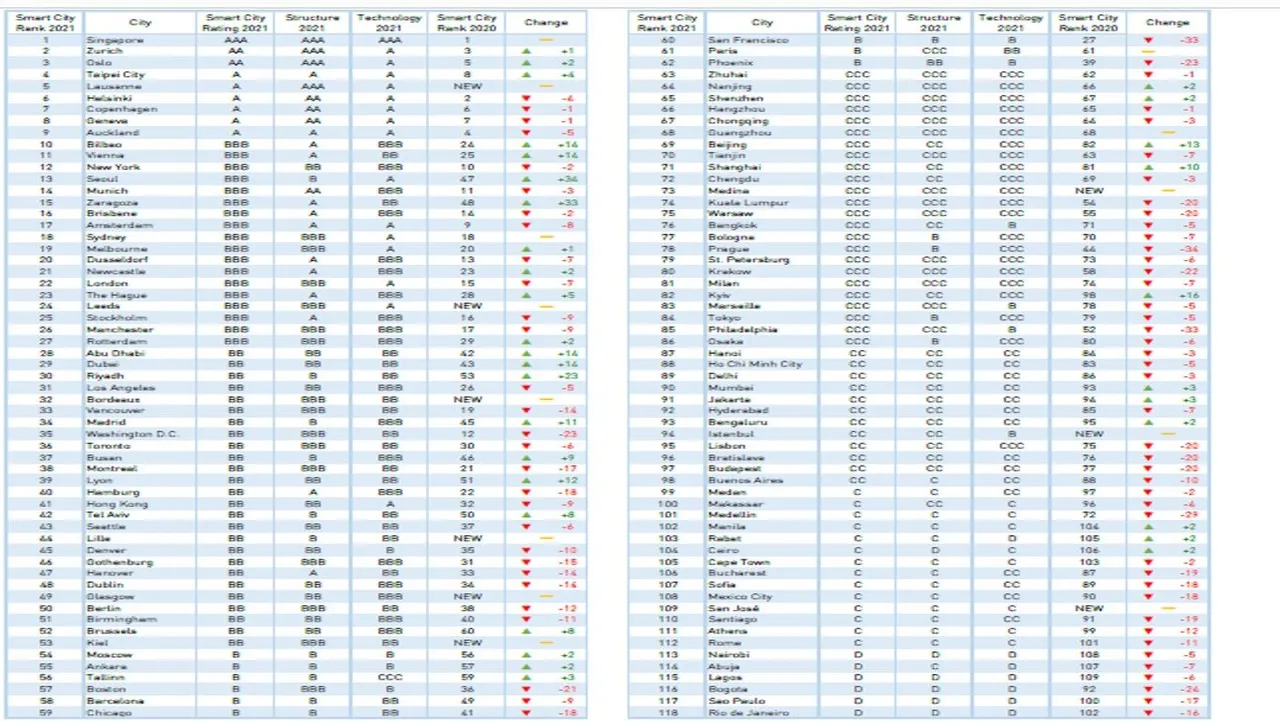
In 2017, IMD and Singapore University of Technology and Design (SUTD) devised the Smart City Index. The index ranks over a hundred cities around the world based on criteria to determine, which cities are the smartest. In 2021, Singapore was ranked number one, Zurich number two, and Oslo number three. Switzerland had three cities ranked in the top 10 (Smart City Observatory). The ranking is based on two broad areas; these are structures and technology. Both these areas contain five categories. They are health and safety, mobility, activities, opportunities, and governance. Each of these are broken down further into subcategories. Figure 1 shows the breakdown of these categories as well as the scores Singapore obtained in each of these categories.
Figure 1: Breakdown of Ranking Criteria (Singapore Example)
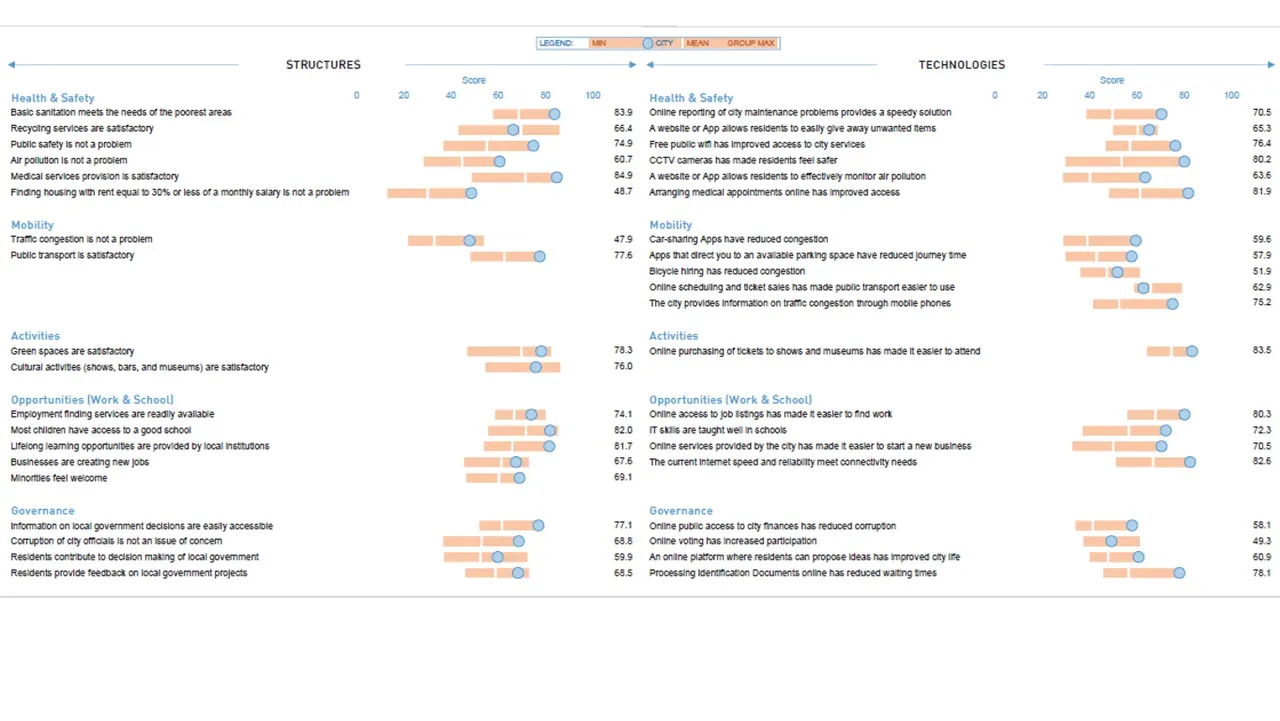
Source: Smart City Observatory
Essentially, it is rating cities based on functionality and the application of technology. Therefore, rating cities based on some proven success and not just the number of or type of projects implemented that have fallen under the category ‘smart’. Singapore performed well based on these criteria as the country has consistently used technology with infrastructure for the purpose of improving efficiency.
The Global Smart City Index is an alternative index for ranking smartness. This index ranks far fewer cities than the Smart City Index. For 2021, on this index, New York ranked first, Singapore second, and London third. Twenty cities have been ranked, see Figure 2.
Figure 2: Global Smart City Index Ranking
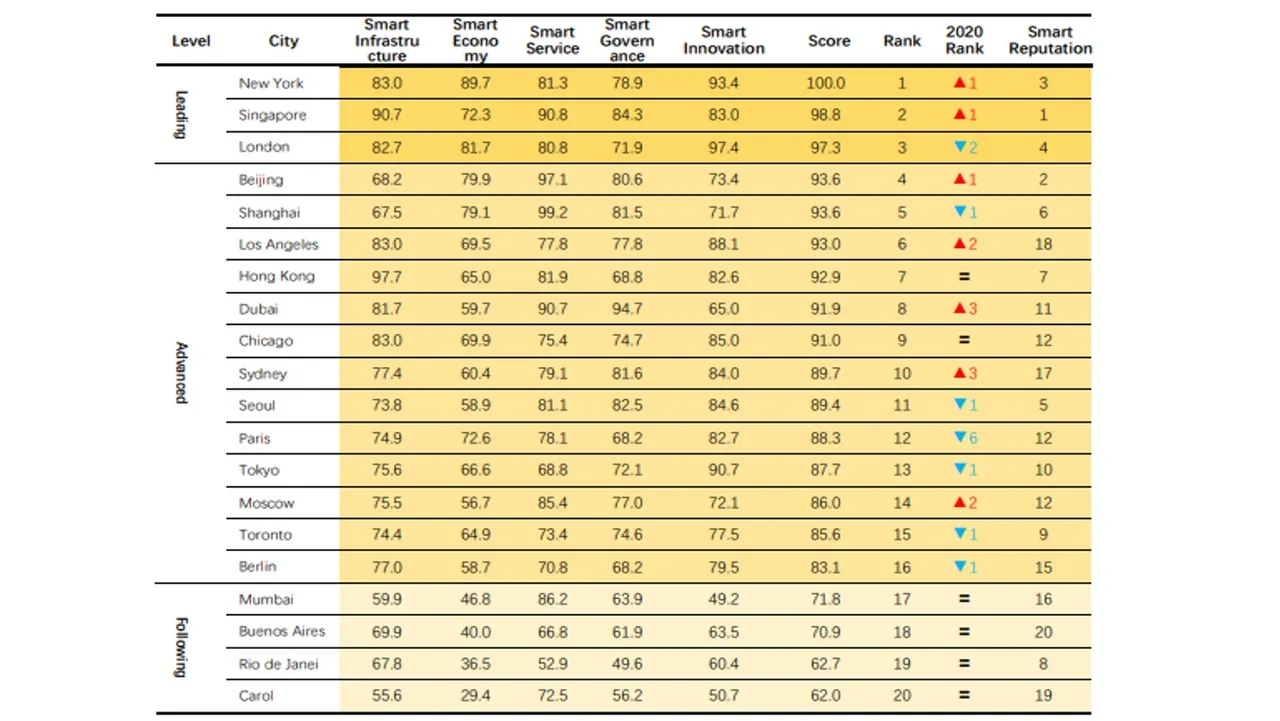
Source: UNPAN
This ranking includes six categories. They are smart reputation, smart governance, smart innovation, smart economy, smart service, and smart infrastructure. These are outlined in Figure 3 and broken down further in Figure 4.
Figure 3: Smart City Ranking Criteria
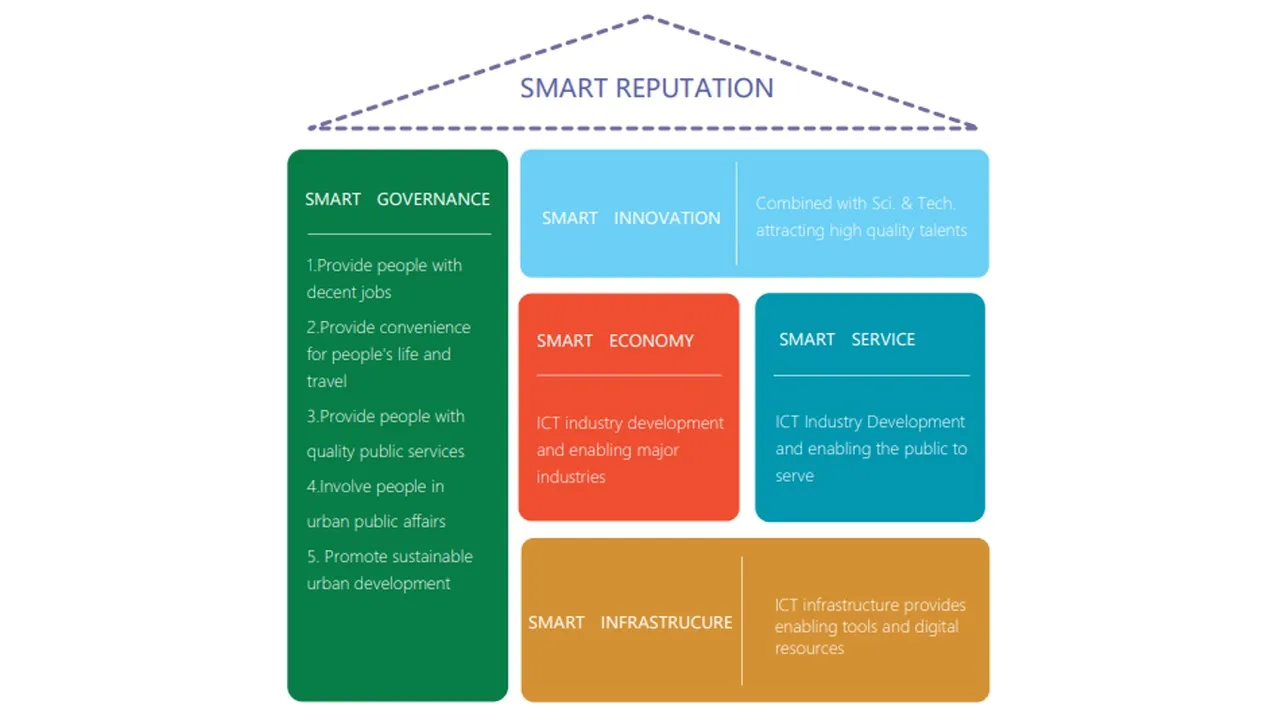
Figure 4: Outline of Smart City Ranking Criteria
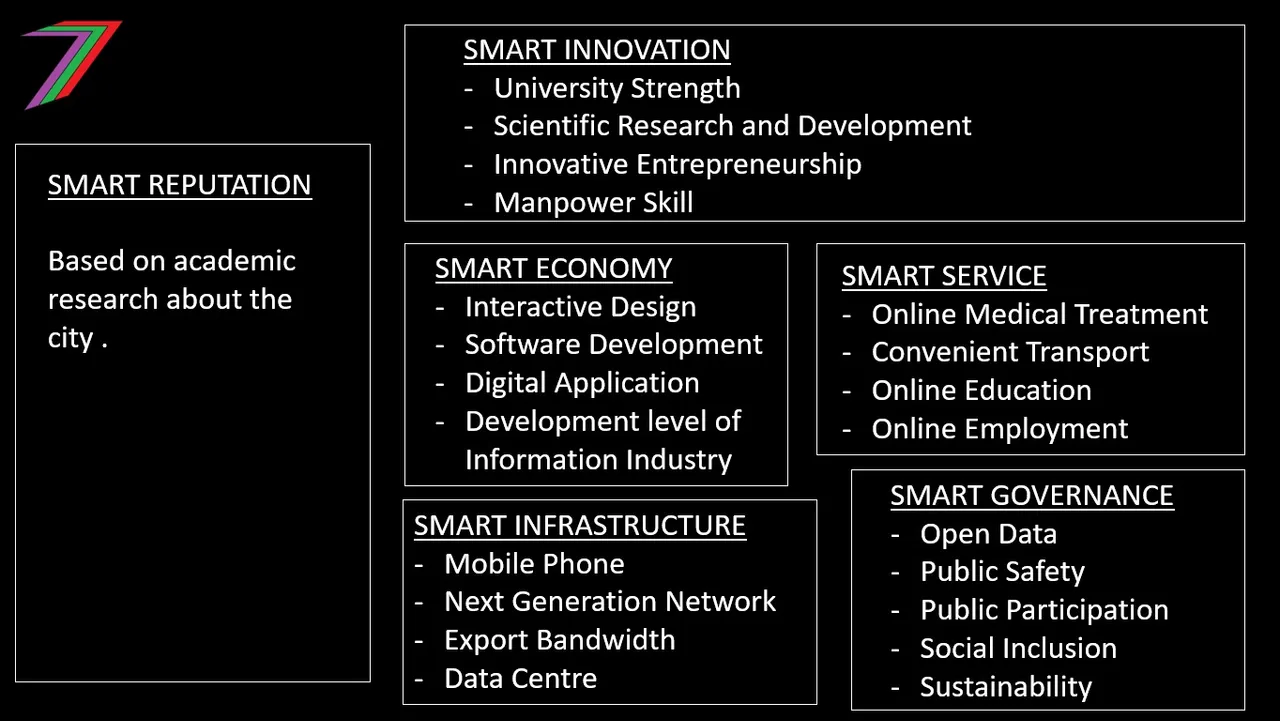
Source: UNPAN
The indicators for the Global Smart City Index were less focused on performance. They were almost entirely focused on the application and implementation of technology rather than quality of life or any improvements that technology has contributed to improving quality of life. When the Global Smart City Index for 2021 was published there was a high emphasis on cities preparedness and ability to respond to Covid-19. This position would have the skewed the results.
The 15-minute City
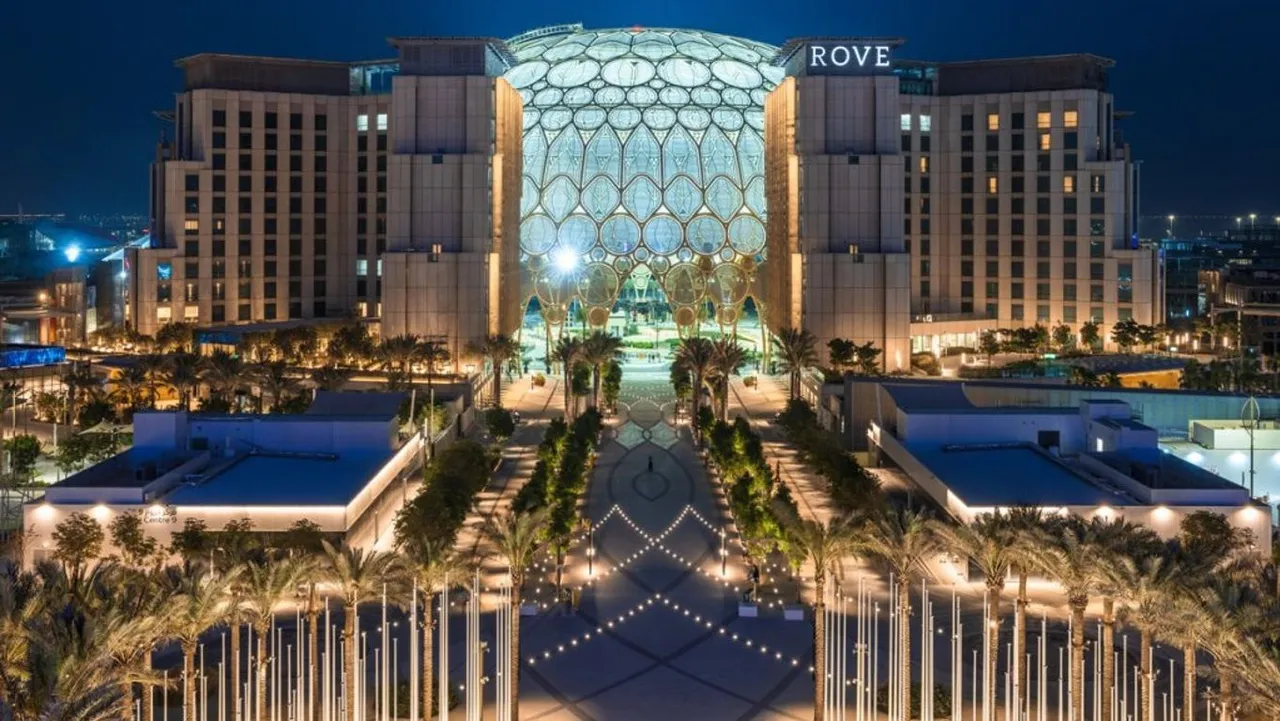
Source: TimeOut Dubai
The 15-minute city is a type of small condensed smart city. It is an urban and residential area where people only need to travel a very short distance (e.g. everything is within 15 minutes walking or cycling distance) to reach their desired destinations. Figure 5 is an example of the concept of a 15-minute city presented by the World Economic Forum.

Source: World Economic Forum
The Expo City in Dubai is an example of a 15-minute city. The city aims to enable people to complete 90% of their daily tasks within 15 minutes from their homes (Sell your cars Dubai). The city covers 1083 acres of land. The city will have a 10km cycle track, 5km jogging track, and 45,000 square metres of gardens and parks. It has the largest 5G enabled network. It will be fully pedestrianised, free of single-use plastic and will include more than 1200 LEED-certified buildings. It will have world’s largest installation of Mindsphere. Mindsphere is a cloud technology platform developed by Siemens. It uses smart metering and sensors to monitor energy consumption and efficiency of power, light, water and climate conditioning systems. The city opened on 1 October 2022. Some areas are still underdevelopment (TimeOut Dubai). In 2023, the Expo City will host COP28 (Expo City Dubai),
Several other countries are building 15-minute cities or urban areas within existing cities that use the same concept as a 15-minute city. These countries include China with plans of ’15-minute life-cycles’, Singapore with plans of ‘20-minute towns’ and ‘45-minute cities’, Australia with plans for ‘20-minute neighbourhoods’ and many others with similar or partial 15-minute plans (Wikipedia).
Many 15-minute cities are likely to be cities within cities. A large city could be reduced into lots of little urban/residential areas that are self-contained and self-sufficient. Theoretically, people would rarely need to leave their area. If we assume people are still permitted to move freely, I believe that is unlikely to happen. They may find it is worthwhile travelling an extra 20 minutes to buy particular goods or visit certain venues. This could be true for people’s favourite restaurants, cafes, and bars or maybe certain entertainment venues that they deem better or just more aligned with their tastes. People like choice and are often prepared to travel further and/or pay more to get it.
C40 Cities (Updated)

Many smart city initiatives have a strong emphasis on climate change and carbon emissions. In 2005, C40 was founded. It began with a group of mayors representing 18 large cities (includes London, Paris, Rome, Barcelona, Madrid, Berlin, Stockholm, San Francisco, New York, Chicago, Philadelphia, Toronto, Mexico City, Sao Paulo, Beijing, Shanghai, and Melbourne) as an agreement to cooperatively reduce climate pollution. By 2006, the group had expanded to include 40 cities; hence, the name ‘C40’. In the same year, C40 partnered with the Clinton Foundation’s Climate Initiative (CCI). In 2011, C40 announced a formal merger of C40 and CCI’s Cities Program. In 2022, the number of C40 cities increased to 96 (C40 Cities). Figure 5 contains a map of the participating cities.
Figure 5: 2022 C40 Cities
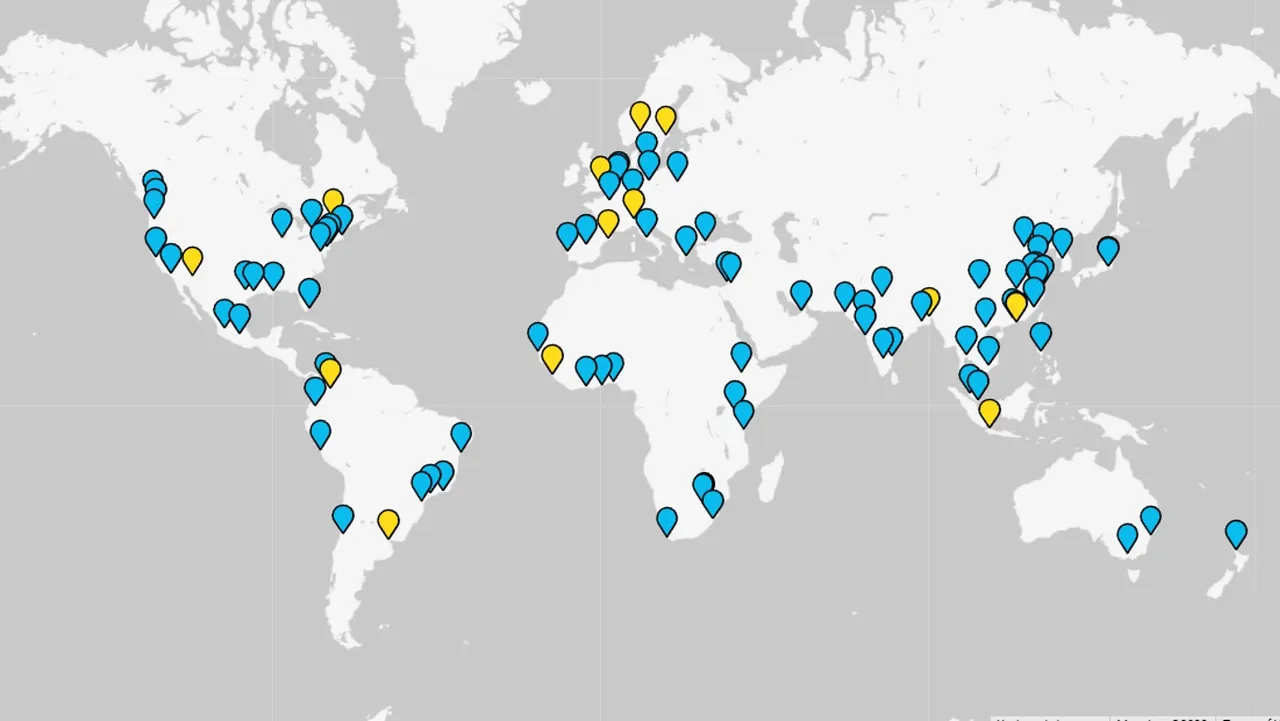
Source: C40
C40 has become a large organisation with bold objections (i.e. influence global agenda). They have managed to obtain support from many Governments (e.g. UK, German, USA, and Denmark), large businesses (e.g. American Express, FedEx, Google, Arup, and Ikea), and large global organisations (e.g. World Bank, United Nations, Europe Climate Foundation, Bloomberg Philanthropies, and Clinton Foundation) (C40).
C40 supports the delivery of the Paris Agreement objectives (e.g. carbon reduction and 1.5% policies), initiatives proposed at the COP (climate change) conferences, the Global Green New Deal and any other climate proposals that have received some global prominence.
A primary goal of C40 is to halve emissions (i.e. carbon dioxide) of its member cities within a decade. To reduce emissions, they want to change the way cities operate (e.g. water and air management, food systems, energy and buildings, transportation, urban planning, and waste management). In 2022, C40 announced a partnership with the National Registry of Environmental Professionals (NREP) to fund 15-minute city policies and to enable cities around the world to implement ambitious net-zero and people-centred neighbourhoods. They aim to deliver a program to pilot 15-minute cities/neighbourhoods in at least 5 cities with a primary focus on reduced emissions (C40). The C40 cities approach to smart cities (15-minute cities) appears to align quite closely with that of the EU (i.e. strongly climate focused).
Failure to Benefit People

Smart cities are being discussed and planned all over the world. The sources that provide information about the smart cities, technology, and future developments are also promoting them as positive. They have claimed the intentions for these cities are to improve efficiency, reduce pollution, increase connectivity, and increase safety. There is no discussions about the negative impacts. There is no discussion about the potential of failure and what this failure would mean.
Smart city solutions are being initiated by Governments and global organisations and being developed with the support of private companies. Governments are the direct customers for private sector initiatives. Therefore, the private sector aims to please the Governments with the products and services they provide. If there is failure in the solutions desired by Governments, there will automatically be failure in whatever the private sector produces. Their goal is to please their customers and not to correct them as they have no incentive to do so (e.g. see how Deloitte promote smart city technology as the product to meet Government requirements). The fallacies of Government led initiatives supported by the private sector are similar to fallacies of stakeholder capitalism, which I have previously discussed in detail.
The EU are making high level policies and plans for their member countries. In regards to smart cities, the EU strongly influence their member countries and most likely incentivising National and local Governments and businesses to follow through with these policies in the form of projects that meet the EU objectives. The EU are highly focused on reducing and eventually eliminating human emissions of carbon dioxide. They are focused on alternative sources of energy (e.g. solar and wind) that are unlikely to be sufficient to consistently replace energy sources that emit carbon dioxide. Hence, causing energy shortages and higher energy prices. One of the reasons energy prices are soaring in the EU is because of their carbon reduction targets. There is little emphasis on nuclear energy or any attempt to harness cosmic energy.
The EU along with many other western countries desire to eliminate carbon dioxide emissions is unrealistic. Even if it was possible, there does not appear a need to do so. According to Watts Up With That?, global temperatures have stabilised for almost a decade. They predict that by 2050, zero carbon strategies are likely to reduce average global temperatures by about 1/17th of a degree. Higher levels of carbon dioxide are contributing to the accelerated growth of plant life, this will increase crop yields and provide more food for animals (Matt Ridley 2019).There are far more pressing environmental problems than the emission of carbon dioxide, I describe them in my post ‘Our Relationship with the Environment’. Governments do not seem interested in addressing more dangerous environmental problems.
We should consider that the true motives for the pursuit of smart cities and the development of smart city technology has more to do with increased control rather than the objectives outlined in most of the smart city plans. Key aspects of smart cities are collecting data and monitoring activity in the city. Monitoring of activity can easily become controlling activity. People could be denied access to various locations for various reasons (Expose). Maybe they have exceeded their weekly travelling distance or have reached their monthly emissions quota. In 2021, Covid-19 passes were used in many countries; they prevented unjabbed people from entering certain venues. If 15-minute cities become prevalent in certain cities. Governments might force people to stay within a certain distance of their home. They may prevent them from leaving by using enforced limits on public transport or program cars (e.g. autonomous vehicles) to not go beyond a certain distance without certain permissions. In 2020 and 2021, some countries imposed limits on how far people could travel and what times they could travel. Smart city technology would make such restrictions much easier to implement.
Central Bank Digital Currencies could play a huge role in smart cities. They can be used to track people’s spending and preferences. This could be very useful to the private sector in how they tailor products for their customers. It will also give businesses with access to this information a strong competitive advantage to businesses that do not have access to it. Government can monitor what people buy. They may decide that some people are buying too much of certain goods. This could be because they consider them harmful or possibly in short supply. The digital currency could be programmed to limit people’s consumption of certain items.
Smart cities may appear to have the potential to help small businesses. Close proximity to customers could help them capture a reasonable market share. However, if travel is being limited, expansion beyond their immediate area might be difficult. Restricted travel could create monopoly power for some businesses where the customer base is too small to enable new entrants. Big business might be able to take advantage of limited competition by placing small branches within each smart city area. Close relations with Government could give them an advantage (e.g. first mover advantage) which could drive smaller businesses out completely or prevent them from being able to enter the market. To reduce the incentive for travel, Governments are likely to want each smart city to be close to homogenous This would mean each smart city would have all the same businesses. For a wider variety of choices people would be forced to shop online and use digital currencies. Online business and a few large businesses makes tax collection a lot easier for Governments. For their vision of smart cities to take hold, it is going to require considerable funding; most of this will be taken from the taxpayers.
My Personal View
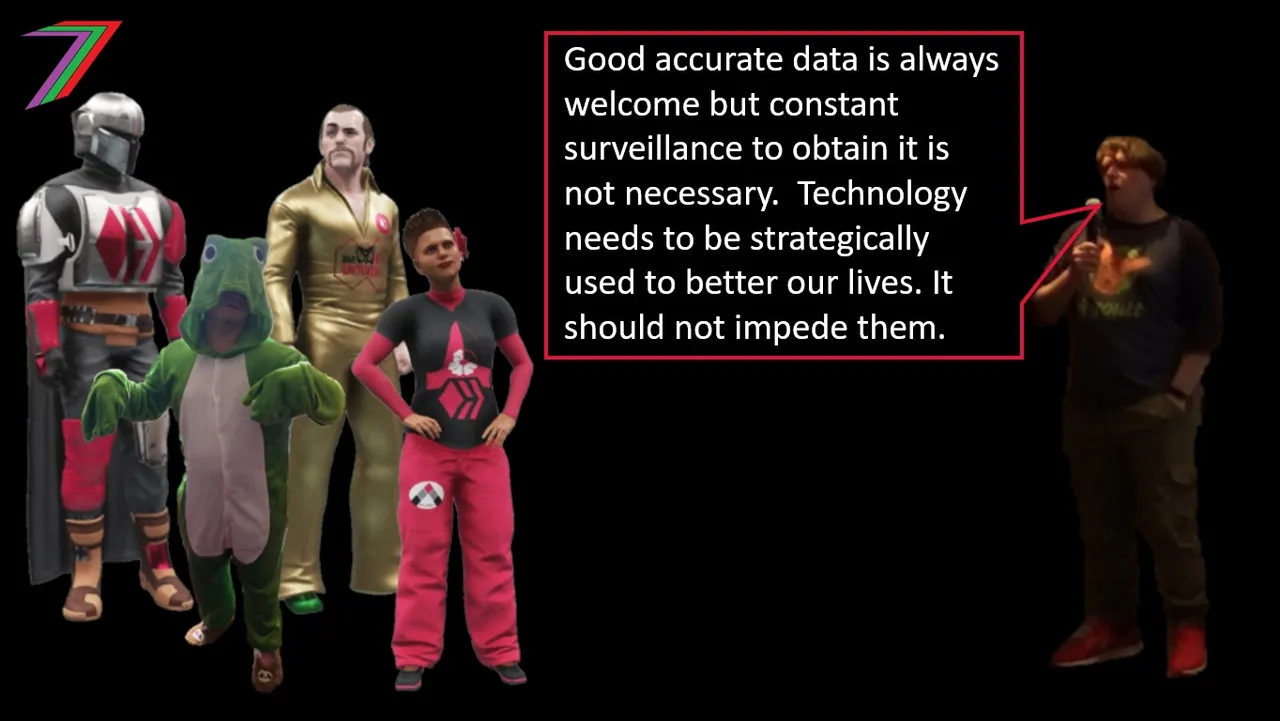
I first encountered Smart City initiatives around 2015/16 when I was working for the Queensland Government. Around that time, several papers and plans were being published. The document I spent the most time exploring was the 2016 Australian Governments Smart Cities Plan. The most striking thing about this plan and almost every smart cities plan is the excessive use of the word ‘smart’. Almost every proposal has the word ‘smart’ in front of it (e.g. smart technology, smart investment, and smart policy). The plan describes many potential benefits from these smart initiatives without clearly explaining how these smart initiatives will actually make people’s lives better.
Smart Everything
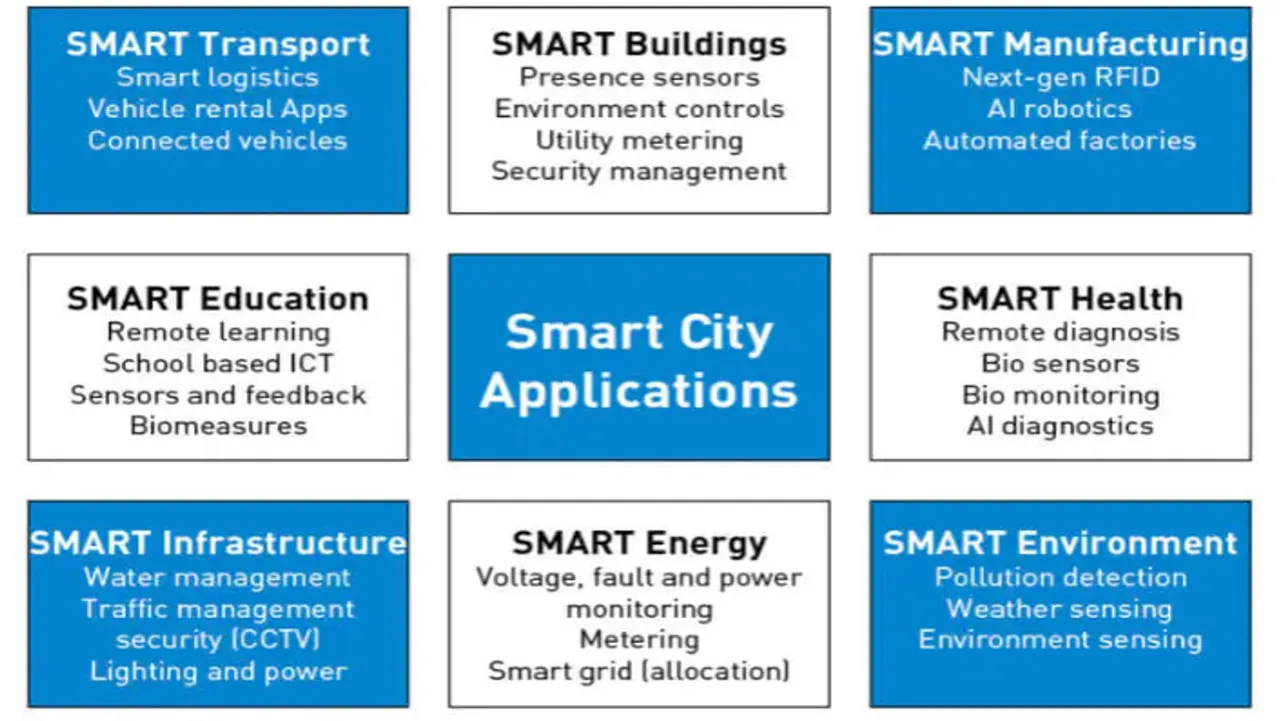
Source: CKGSB Knowledge
As an economist, I want access to data. It enables me to conduct analysis. More precise data improves the quality of my analysis. A key focus of smart cities is data collection. Data will be collected about everything and there will be a continuous flow of it. This could make some types of analysis easier but most of this data would be unnecessary. Analysis is normally conducted to discover trends. Is it going up, down, or remaining the same? These trends are used to predict the future. For example, based on current trends, when will capacity be reached? A continuous flow of data is not necessary to determine a trend. If needed, studies can be conducted to find out more information. These studies will seek the most pertinent information. An excessive amount of data can slow analysis if most of it is unnecessary; more time is needed to determine what is most relevant.
It regards to behaviour, people eventually find the path of least resistance. People who frequently travel between places know the best routes to take and the times to take them. A constant flow of information is not required to inform them. A continuous flow of information may become useful for events that cannot be predicted (e.g. serious accident that will cause delays along a particular route). People could become informed quicker so they can change their plans. This information only becomes valuable if alternative plans can be made quickly. For example, a network would need plenty of redundancy for this to occur effectively.
Technology can be a marvel. It can and has proven to greatly improve efficiency and quality of life. However, it needs to be designed for purpose and it needs to be implemented with the intentions of achieving these purposes. Singapore is an example of a country that has pursued technological advancements to meet clearly defined objectives. Therefore, they have made the most of the technological they have designed or adopted. Government and the private sector have worked together to make these achievements possible. They have been motivated by improving efficiency and profit and not ignored market forces. Most other countries appear to be pursuing plans to implement technology that fits a smart city criteria. They do not appear to be focusing on applying this technology in a manner that meets the requirements of the city and the people that live in it.
Singapore has an advantage over most western countries. This is because it has a culturally acceptable form of dictatorship. There is minimal threat to its power structure. The Government are able to maintain their power structure by genuinely focusing on short, medium, and long run strategies that generates wealth and improves quality of life. At the same time, the success of the initiatives enables top Government officials to amass enormous wealth from both high salaries and investments. As of 2022, Singapore Prime Minister Lee Hsien Loong had an estimated Net Wealth of $51 million (Victor Mochere and Celebrity Net Worth). In years to come, western influence could force their form of Government to change so that it more closely aligns with western style ‘democracy’.
People in western countries are not accepting of an open dictatorship such as Singapore’s. Instead, Governments focus on creating the illusion of choice and democracy. This involves elaborate lies and deception that involves a combination of Government, private sector, and mainstream media. There is more incentive for initiatives to perpetuate the lie than create genuine benefit for the people. The implementation of smart cities just needs to appear like an improvement. However, the required increase in the size of the Government to support these initiatives (directly or indirectly) will drain the wealth of the middle class. Many of whom, previously achieved a good standard of living from free market operations that were prevalent in western countries (I discuss in detail in my post ‘The Masters of Production’). If stakeholder capitalism is widely adopted, these opportunities will become limited.
The idea of smart cities sounds good. Governments, global organisations, and Big Business are doing a good job of hyping the technology as well as the many benefits they claim it will bring. However, the connection between the application of the technology and realisable benefits is difficult to substantiate. This is because the benefits are likely to be minimal for most cities and for some cities the application will fail altogether. Good strategic use of technology can be very beneficial but it must be fit-for-purpose, it must address the needs of the city and be compatible with the culture of the people living in the city. The downside to smart cities could be enormous. Centralised control over so much information and technology is a massive threat to people’s freedom. The events of Covid-19 has demonstrated that many Governments are willing to take as much power as they can. Smart cities can make this very easy for them.
More posts

If you want to read any of my other posts, you can click on the links below. These links will lead you to posts containing my collection of works. These 'Collection of Works' posts have been updated to contain links to the Hive versions of my posts.
Hive: Future of Social Media

Spectrumecons on the Hive blockchain




